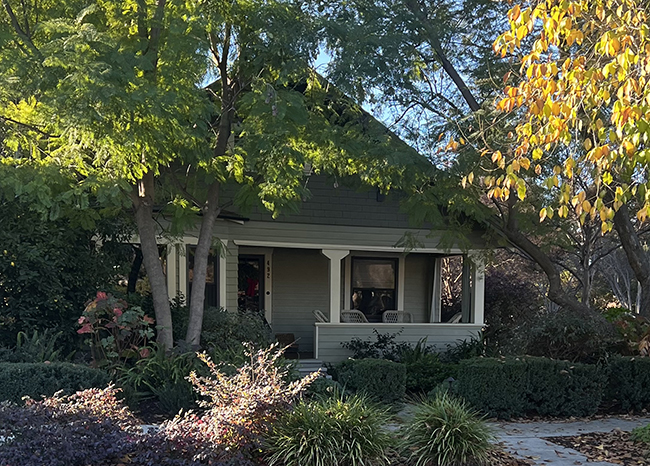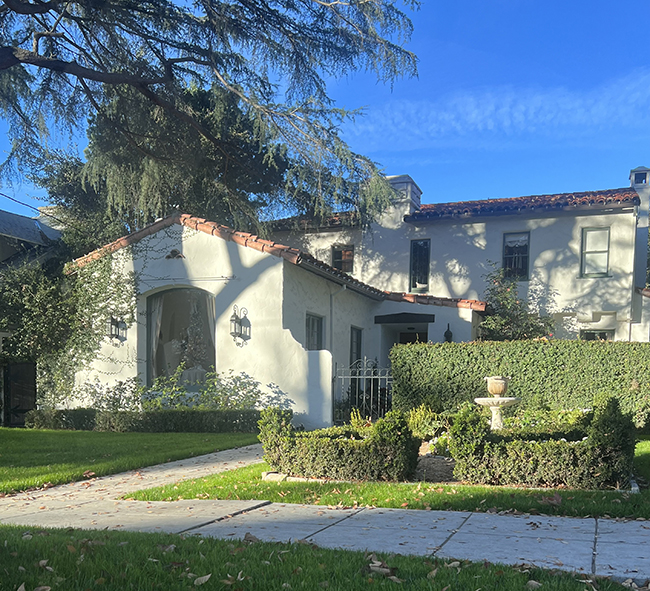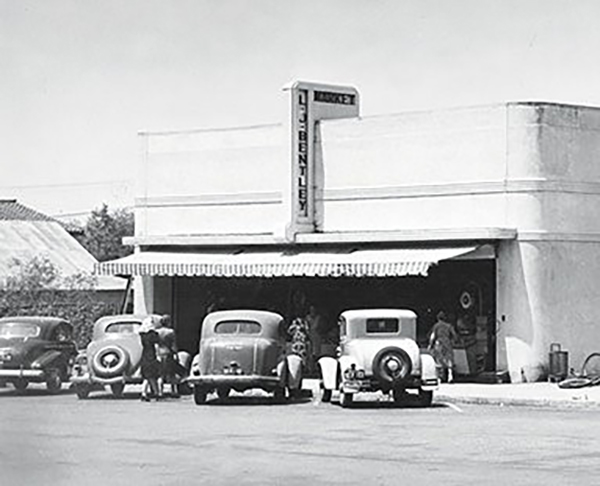Preserve, restore, reuse!

This home on Eighth Street used restoration treatment standards to remove the enclosed porch and return it to its original configuration. Photo/courtesy of John Neiuber
by John Neiuber
“There may have been a time when preservation was about saving an old building here or there, but those days are gone. Preservation is in the business of saving communities and the values they embody.”
— Richard Moe, National Trust for Historic Preservation
Each year, Claremont Heritage adopts a theme around which to organize programming and initiatives. The theme for 2024 is “Preserve, restore, reuse!” As Claremont Heritage approaches its 50th anniversary in 2026, it operates under the realization that while fighting to preserve an historic building is a worthy endeavor, the true aim of historic preservation is about fostering a sense of place, identity, and community.
Never has this idea of preserving a sense of place, identity, and community been more germane to the city than presently. Regardless of infill projects of the past several years, the community as a whole is largely built out and the vast majority of homes and other structures have either reached or will soon reach 50 years of age and qualify for consideration as historic resources. Not every home of that age or a development can or should be identified as historic; however, the preservation of the neighborhood in terms of its identity, look and feel is a worthy consideration.
The authority for the treatment of historic resources is the National Park Service’s 1981 publication, “The Secretary of the Interior’s Standards for the Treatment of Historic Properties.” The purpose of the standards is to provide guidance to homeowners, historic building owners, preservationists, architects, and contractors.
Preservation as a treatment
“Preservation is defined as the act or process of applying measures necessary to sustain the existing form, integrity, and materials of an historic property,” according to the park service’s guidebook. Rather than extensive replacement and new construction, the work focuses on the maintenance and repair of historic materials and features.
The Sumner House at College Avenue and First Street is an example of preservation as a treatment. Pomona College preserved the house for future use by largely repairing historic materials and character defining features. The Spanish Revival house at 825 N. Indian Hill Blvd. is another example of a house that was preserved as to form, integrity, and materials. Currently, the hacienda ranch house at the southwest corner of Oxford and 11th Street is undergoing an extensive preservation process.

This home on Indian Hill Boulevard was preserved as to form, integrity, and materials. Photo/courtesy of John Neiuber
Restoration as a treatment
Restoration, according to the guidebook, is “The act or process of accurately depicting the form, features, and character of a property as it appeared at a particular period of time by means of removal of features from other periods in its history and reconstruction of missing features from the restoration period.”
An example of this is the home at the southeast corner of Eighth Street and Berkeley Avenue. It had a front porch that had been enclosed and when the house was preserved, the enclosed portion was removed, and the porch restored to how it had been originally built. The house at 739 N. Harvard Ave. is another example of where inappropriate additions were removed and the enclosed, second floor terrace was restored to its original configuration.

This house on Harvard Avenue is an example of where inappropriate additions were removed and the enclosed, second floor terrace was restored to its original configuration. Photo/courtesy of John Neiuber
Rehabilitation as a treatment
The guidebook defines rehabilitation “As the act or process of making possible a compatible use for a property through repair, alterations, and additions while preserving those portions or features which convey its historical, cultural, or architectural values.”
Rehabilitation is found extensively in the city, especially in commercial and institutional buildings, and is often referred to as adaptive reuse. Examples of this are the Padua Hills Theatre, the Pizza N Such restaurant in the old Claremont National Bank Building, and recently La Popular CDMX in the Bentley Market building (formerly Rhino Records). The rehabilitation of this building exposed more of the original design of the art moderne building. The removal of the enclosed facade and the addition of doors that open to the sidewalk was how the market was originally configured.

The original Bentleys Market, now La Popular CDMX, had doors that opened the entire front of the market to the sidewalk. Photo/courtesy of Claremont Heritage

La Popular CDMX conducted an extensive rehabilitation treatment of the former Bentley’s Market and Rhino Records building, complete with doors that open the restaurant to the sidewalk. Photo/courtesy of John Neiuber
Reconstruction as a treatment
This approach is defined in the standards “As the act or process of depicting, by means of new construction, the form, features, and details of a non-surviving site, landscape, building, structure, or object for the purpose of replicating its appearance at a specific period of time and in its historic location.” Examples of this treatment would be the reconstruction of a house destroyed by fire or severely damaged by a windstorm.
Oftentimes, a project does not adhere to just one of the approaches listed above. Many times, a project uses aspects of each of the treatment approaches. While some existing materials may be preserved, others may need to be reconstructed to match existing materials, while an addition is needed to accommodate modern standards of living, and reconstruction of substandard, missing, or deteriorated elements are required.
Using the standards and consulting them prior to beginning work on a project will ensure that preservation in Claremont is about fostering a sense of place, identity, and community.









0 Comments